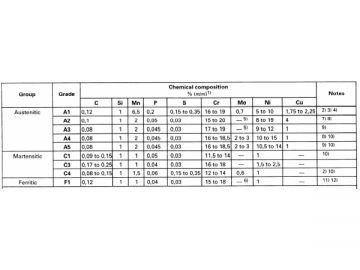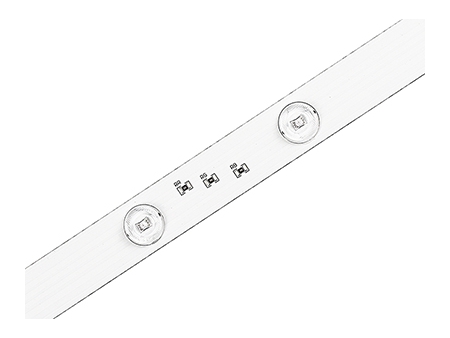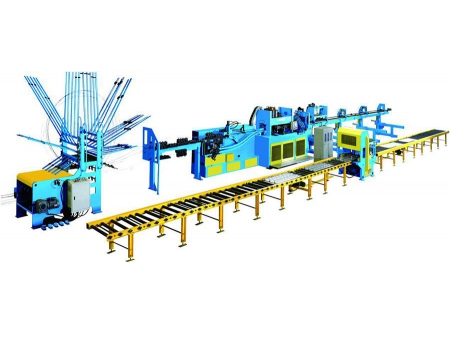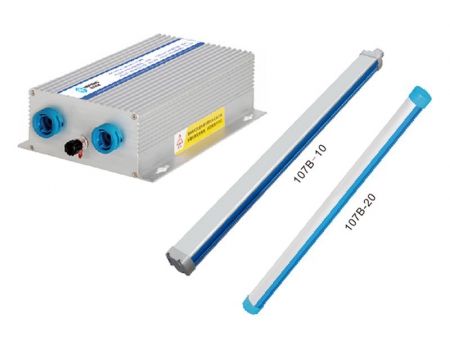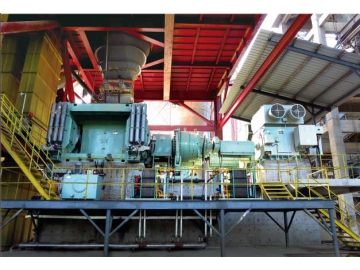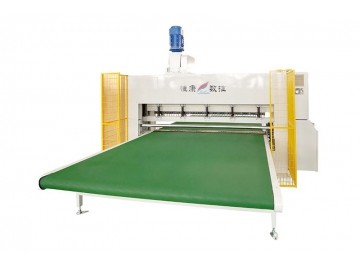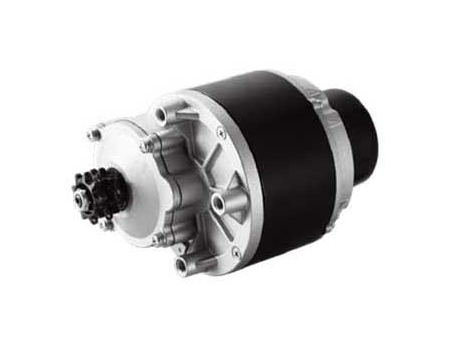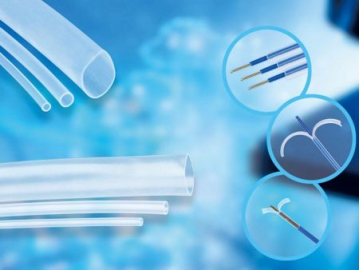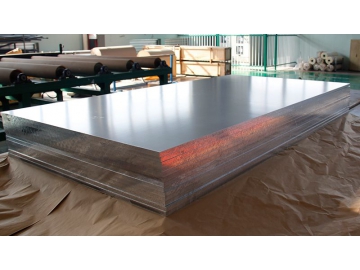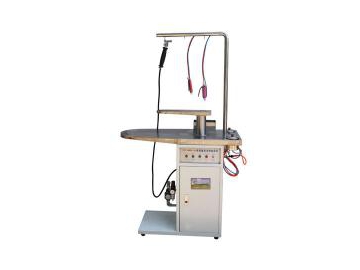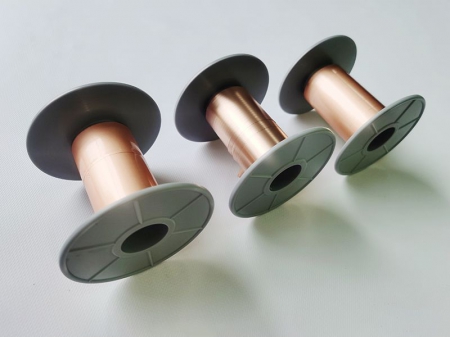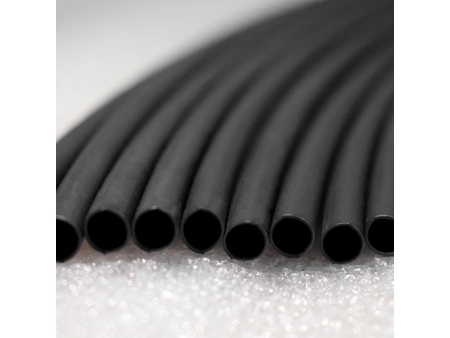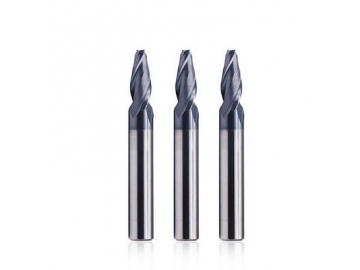3506_2E
INTERNATIONAL STANDARD
Mechanical properties of corrosionresistant stainless-steel fasteners
Part 2:
Foreword
ISO (the international Organization for Standardization) is a worldwide federation of national Standards bodies (ISO member bodies). The work of preparing International Standards is normally carried out through ISO technical committees. Esch member body interested in a subject for which a technical committee has been established has the right to be represented
on that committee. International organizations, governmental and nongovernmental, in liaison with ilS0, also take patt in the work. ISO collaborates closely with the International Electrotechnical Commission (IEC) on all matters of electrotechnical standardization.
Draft International Standards adopted by the technical committees are circulated to the member bodies for voting. Publication as an International Standard requires approval by at least 75 % of the member bodies casting a vote.
International Standard ISO 3506-2 was prepared by Technical Committee ISO/TC 2, Fasteners, Sub-Committee SC 1, Mechanical properfies of fasteners.
This first edition, together with ISO 3506-1 and ISO 3506-3, cancels and replaces ISO 3506:1979, which has been technically revised.
ISO 3506 consists of the following Parts, under the general title Mechanical properties of corrosion-resistant stainless-steel fasteners.
- Part 1: Bolts, screws and studs
- Parf2: Nuts
- Part 3: Set screws and similar fasteners not under tensile stress
Annexes A to G of this patt of ISO 3506 are for information only.
ISO 1997
All rights reserved. Unless otherwise specified, no part of this publication may be reproduced or utilized in any form or by any means, electronie or mechanical, including photocopying and microfilm, without Permission in writing from the publisher.
International Organization for Standardization
Case postale
Internet central @iso.ch
x
Printed in
Introduction
In the preparation of this patt of ISO 3506 special attention has been given to the fundamentally different property characteristics of the stainless steel fastener grades compared with those of carbon steel and low-alloy steel fasteners. Austenitic stainless steels are strengthened only by cold working and consequentiy the components do not have as homogeneous a condition as hardened and tempered Parts. These special features have been recognized in the elaboration of the property classes and the test procedures for mechanicat properties.
This page intentionally left blank
Mechanical properties of corrosion-resistant stainless-steel fasteners -
Part 2:
Nuts
1 Scope
This part of ISO 3506 specifies the mechanical properties of nuts made of austenitic, martensitic and ferritic grades of corrosion-resistant stainless steels when tested over an ambient temperature range of 15 “C to 25 “C. Properties will vary at higher or lower temperatures.
lt applies to nuts
- with nominal thread diameters (d) up to and including
- of triangular ISO metric threads with diameters (d) and pitches in accordance with ISO 68-1, ISO 261 and ISO 262;
- of any shape;
- with width across flats as specified in ISO 272;
- with nominal heights greater than or equal to 0,5 d.
lt does not apply to nuts requiring proper-Ges such as
- locking abilities;
- weldability.
This patt of ISO 3506 does not define corrosion or Oxidation resistance in particular environments.
The aim of this part of ISO 3506 is a classification into property classes of corrosion resistant stainless steel fasteners. Some materials tan be used at temperatures down to -200 “C, some tan be used at temperatures up to 800 “C in air. Information on the influence of temperature on mechanical proper-Ges is found in annex D.
Corrosion and Oxidation performances and mechanical properties for use at elevated or sub-zero temperatures must be the subject of agreement between user an manufacturer in each particular case. Annex E Shows how the risk of intergranular corrosion at elevated temperatures depends on the carbon content.
All austenitic stainless steel fasteners are normally non-magnetic in the annealed condition; after cold working, some magnetic properties may be evident (see annex F).
2 Normative references
The following Standards contain provisions which, through reference in this text, constitute provisions of this part of ISO 3506. At the time of publication, the editions indicated were valid. All Standards are subject to revision, and Parties to agreements based on this part of ISO 3506 are encouraged to investigate the possibility of applying the
most recent editions of the Standards indicated below. Members of IEC and ISO maintain registers of currently valid International Standards.
EO 3506-2: 1997(E) 0 ISO
BS0 68-1: --liJ /SO general purpose screw threads - Basic profile - Part 7: Metric screw threads.
ISO 261: -29, ISO general purpose metric screw threads - General plan.
ISO 262:~39, ISO general purpose metric screw threads - Selected sizes for screws, bolts and nuts.
ISO 272: 1982, Fasteners - Hexagon products - Widths across flats.
ISO 898-2: 1992, Mechanical properties of fasteners - Part 2: Nuts with specified proof Load values - Coarse thread.
ISO 898-6: 1994, Mechanical properties of fasteners - Part 6: Nuts with specified proof load values - Fine pitch thread.
ISO 3651-1: -4), Determination of resistance to intergranular corrosion stainless steels - Part 1: Austenitic and ferritic-austenitic (duplex) stainless steels - Corrosion test in nitric acid medium by measurement of loss in mass (Huey test).
ISO 3651-2: -5), Determination of resistance to intergranular corrosion stainless steels - Part 2: Ferritic, austenitic and ferritic-austenitic (duplex) stainless steels - Corrosion test in media containing suifuric acid.
ISO 6506: 1981, Metallic materials - Hardness test - Brinell test.
ISO 6507-1:1997, Metallic materials - Hardness fest - Vickers test - Part 7: Test method.
ISO 6508:1986, Metallic materials - Hardness test - Rockwell test (scales A - B - C - D - E - F- G - H - K).
3 Designation, marking and finish
3.1 Designation
The designation System for stainless steel grades and property classes for nuts is shown in figure 1. The designation of the material consists of two blocks which are separated by a hyphen. The first block designates the steel grade, the second block the propet-ty class.
The designation of the steel grade (first block) consists of the Ietters
A for austenitic steel or
C for martensitic steel or
F for ferritic steel
which indicate the group of steel and a digit which indicates a range of Chemical compositions within this steel group.
The designation of the property class (second block) consists of 2 digits for nuts with the height m≥ 0,8 d (style 1) which indicates l/l0 of the stress under proof load and 3 digits for nuts with the height 0,5 d≤ m <0,8 d (thin nuts), the first digit indicating that the nut has a reduced loadability and the following two digits l/10 of the stress under proof load.
NOTE - For the definition of style 1 for nuts see ISO 898-2:1992, annex A.
1) To be published. (Revision of ISO 68:1973)
2) To be published. (Revision of ISO 261:1973
3) To be published. (Revision of ISO 262:1973)
4) To be published. (Revision of ISO 3651-1:1976)
5) To be published. (Revision of ISO 3651-2:1976)
Examples for the designation of material:
1) A2-70 indicates:
austenitic steel, cold worked, minimum 700 N/mm2 (700 MPa) stress under proof load (nut of style 1).
2) C4-70 indicates:
martensitic steel, hardened and tempered, minimum 700 N/mm2 (700 MPa) stress under proof load (nut of style 1).
3) A2-035 indicates:
austenitic steel, cold worked, minimum 350 N/mm2 (350 MPa) stress under proof load (thin nut).
1) The steel groups and steel grades classified in figure 1 are described in annex A and specified by the Chemical composition given in table 1.
2) Low carbon stainless steels with carbon content not exceeding 0,03 % may additionally be marked with an L. EXAMPLE: A
Figure 1 - Designation System for stainless steel grades and property classes for nuts ( Figure 1)
3.2 Marking
Only if all requirements in this part of ISO 3506 are met, Parts shall be marked and/or described according to the designation System described in 3.1.
Marking is mandatory on nuts with nominal thread diameters d. >
permissible.
When the marking is made with grooves (see figure 2) and the property class is not indicated, property ciass 50 or 025 will apply.
Nuts style 1
Thin nuts
1) manufacturer’s identification mark
2) steel grade
3) property class
Marking with material designation and manufacturer’s identification mark
s is the width across flats
Alternative groove marking (for A2 and A4 steel grades only)
NOTE - For marking of left-hand thread, see ISO 898-2.
Figure 2 - Marking of nuts
Marking with the designation and manufacturer’s identification mark is mandatory on all packages of all sizes.
3.3 Finish
Unless otherwise specified, fasteners in accordance with this part of ISO 3506 shall be supplied clean and bright. For maximum corrosion resistance passivation is recommended.
4 Chemical composition
The Chemical compositions of stainless steels suitable for fasteners in accordance with this part of ISO 3506 are given in table 1.
The final choice of Chemical composition within the specified steel grade is at the discretion of the manufacturer
In applications where risk of intergranular corrosion is present, testing in accordance with ISO 3651-1 or ISO 3651-2 is recommended. In such cases, stabilized stainless steels A3 and A5 or stainless steels A2 and A4 with carbon content not exceeding 0,03 % are recommended.
Table 1 - Stainless steel grades - Chemical composition
NOTES
2 Examples for stainless steels which are standardized in ISO 683-13 and in ISO 4954 are given in annexes B and C respectively.
1) Values are maximum unless otherwise indicated.
2) Sulfur may be replaced by selenium.
3) If the nicke1 content is below 8 %, the minimum manganese content must be 5 %.
4) There is no minimum limit to the topper content provided that the nicke1 content is greater than 8 %.
5) Molybdenum may be present at the discretion of the manufacturer. However, if for some applications limiting of the molybdenum content is essential, this must be stated at the time of ordering by the purchaser.
6) Molybdenum may be present at the discretion of the manufacturer.
7) If the chromium content is below 17 %, the minimum nicke1 content should be 12 %.
8) For austenitic stainless steels having a maximum carbon content of 0,03 %, nitrogen may be present to a maximum of 0,22 %.
9) Must contain titanium 2 5 x C up to 0,8 % maximum for stabilization and be marked appropriately in accordance with this table, or must contain niobium (columbium) and/or tantalum 2 10 x C up to 1,O % maximum for stabilization and be marked appropriately in
accordance with this table.
10) At the discretion of the manufacturer the carbon content may be higher where required to obtain the specified mechanical proper-Ges at larger diameters, but shall not exceed 0,12 % for austenitic steels.
11) May contain titanium 2 5 x C up to 0,8 % maximum.
12) May contain niobium (columbium) and/or tantalum 2 10 x C up to 1 % maximum.
5 Mechanical properties
The mechanical properties of nuts in accordance with this part of ISO 3506 shall conform to the values given in table 2 or 3.
For acceptance purposes the mechanical properties as given in this clause apply and shall be tested as follows:
- hardness test, according to 6.1 (only grades Cl, C3 and C4, hardened and tempered);
- proof load test, according to 6.2.
Table 2 - Mechanical properties for nuts - Austenitic grades
1) For fasteners vith nominal thread diameters d >
Table 3 - Mechanical properties for nuts - Martensitic and ferritic grades
1) Hardened and tempered at a minimum tempering temperature of
2) Nominal thread diameter d ≤
6 Test methods
6.1 Hardness HB, HRC or HV
The hardness test shall be carried out in accordance with ISO 6506 (HB), ISO 6508 (HRC) or ISO 6507-1 (HV). In the case of doubt, the Vickers hardness test is decisive for acceptance.
The test procedure shall be as specified in ISO 898-2 and ISO 898-6.
The hardness values shall be within the limits given in table 3.
6.2 Proof load
The test procedure and criteria shall be in accordance with ISO 898-2 and ISO 898-6.
Annex A
(informative)
Description of the groups and grades of stainless steels
A.l General
In ISO 3506-1, ISO 3506-2 and ISO 3506-3 reference is made to steel grades Al to A5, Cl to C4 and Fl covering steels of the following groups:
Austenitic steel Al to A5
Martensitic steel Cl to C4
Ferritic steel Fl
In this annex the characteristics of the above mentioned steel groups and grades are described.
This annex also gives some information on the non- tandardized steel group FA. Steels of this group have a ferriti c-austenitic structure.
A.2 Steel group A (austenitic structure)
Five main grades of austenitic steels, Al to A5, are included in ISO 3506-1, ISO 3506-2 and ISO 3506-3. They cannot be hardened and are usually non-magnetic. In Order to reduce the susceptibility to work hardening topper may be added to steel grades Al to A5 as specified in table 1.
For non-stabilized steel grades A2 and A4 the following applies.
As chromic Oxide makes steel resistant to corrosion, low carbon content is of great importante to non-stabilized steels. Due to the high affinity of chrome to carbon, chrome carbide is obtained instead of chromic oxide which is more likely at elevated temperature. (See annex E.)
For stabilized steel grades A3 and A5 the following applies.
The elements Ti, Nb or Ta affect the carbon and chromic Oxide is produced to its full extent.
For offshore or similar applications, steels with Cr and Ni content at about 20 % and Mo at 4,5 % to 6,5 % are required.
When risk of corrosion is high experts should be consulted.
Steel grade Al is especially designed for machining. Due to t he high Sulfur content the steels within this steel grade have lower resistance to corrosion than correspondin g steels with normal sulfur content.
Steels of grade A2 are the most frequently used stainless steels. They are used for kitchen equipment and apparatus for the Chemical industry. Steels within this grade are not suitable for use in non-oxidizing acid and agents with chloride content, i.e. swimming pools and sea water.
Steels of grade A3 are stabilized “stainless steels” with proper-Ges of steels in grade A2.
Steels of grade A4 are “acid proof steels”, wh ich are M o alloyed and give considerably better resistance to corrosion. A4 is used to a great extent by the cellulose industry as this steel g rade is de veloped for boiling sulfu rit acid (thus given the name “acid proof”) and is, to a certain extent, also suitable in an environment with chloride content. A4 is also frequently used by the food industry and by the ship-building industry.
Steels of grade A5 are stabilized “acid proof steels” with propet-ties of steels in grade A4.
A.3 Steel group F (ferritic structure)
One ferritic steel grade (Fl) is included in ISO 3506-1, ISO 3506-2 and ISO 3506-3. The steels within grade Fl cannot be hardened normally and should not be hardened even if possible in certain cases. The Fl steels are magnetic.
Steel grade Fl is normally used for simpler equipment with the exeption of the superferrites which have extremely low C and N contents. The steels within grade Fl tan, if need be, replace steels of grades A2 and A3 and be used at higher chloride content.
A.4 Steel group C (martensitic structure)
Three types of martensitic steel grades, Cl, C3 and C4, are included in ISO 3506-1, ISO 3506-2 and ISO 3506-3. They tan be hardened to an excellent strength and are magnetic.
Steels within grade Cl have limited resistance to corrosion. They are used in turbines, Pumps and for knives.
Steels within grade C3 have limited resistance to corrosion though better resistance than Cl. They are used in Pumps and valves.
Steels within grade C4 have limited resistance to corrosion. They are intended for machining, otherwise they are similar to steels of grade Cl.
A.5 Steel group FA (ferritic-austenitic structure)
Steel group FA is not included in ISO 3506-1, ISO 3506-2 and ISO 3506-3 but will most probably be included in the future.
Steels of this steel group are the so-called duplex steels. The first FA steels to be developed had some drawbacks that have been eliminated in the recently developed steels. The FA steels have better properties than steels of the types A4 and A5 especially as far as strength is concerned. They also exhibit superior resistance to pitting and Crack corrosion.
Examples of composition are shown in table A.l
Table A.1 - Ferritic-austenitic steels - Chemical composition
Annex B
(informative)
Stainless steel composition specifications
(Extract from ISO 683-13:1986)
Table B.1
1) Elements not quoted in this table shall not be intentionally added to the steel without the agreement of the purchaser, other than for the purpose of finishing the heat. All reasonable precautions shall be taken to prevent the addition, from scrap or other material used in manufacture, of such elements which affect the hardenability, mechanical properties and applicablility.
2) The type numbers are tentative and will be subject to alteration when the relevant International Standards have been established.
3) Tantalum determined as niobium.
4) Not part of ISO 683-13.
5) (C t N) max. 0,040 % (mlm).
6) 8 x (C N) s (Nb Ti) s 0,80 % (141~).
7) After agreement at the time of enquiry and Order the steel may be supplied with a Mo content of 0,20 to 0,60 % (m/m).
8) Excellent resistance to intergranular corrosion.
9) Stabilized steels.
I0) The manufacturer has the Option of adding molybdenum up to 0,70 % (m/m).
11) The maximum nicke1 content of semi-finished products for fabrication into seamless tubes may be increased by 0,5 % (m/m).
Table C.l
1) The designations given in the first column are consecutive numbers. The designations given in the second column are in accordance with the System proposed by lSO/TC 17/SC 2. The designations given in the third column represent the antiquated numbers used in ISO 4954:1979 (revised in 1993).
2) Elements not quoted in this table should not be intentionally added to the steel without the agreement of the purchaser, other than for finishing the heat. All reasonable precautions should be taken to prevent the addition, from scrap or other materials used in manufacture, of elements which affect mechanical propertices and applicability.
3) Not part of ISO 4954.
4) Excellent resistance to intergranular corrosion.
Annex D
(informative)
Mechanical properties at elevated temperatures; application at low temperatures
NOTE - If the bolts, screws or studs are properly calculated the mating nuts will automatically meet the requirements. Therefore, in the case of application at elevated or low temperatures, it is sufficient to consider the mechanical properties of bolts, screws and studs only.
D.l Lower yield stress or stress at 0,2 % permanent strain at elevated temperatures
The values given in this annex are for guidance only. Users should understand that the actual chemistry, loading of the installed fastener and the environment may Cause significant Variation. If loads are fluctuating and operating periods at elevated temperatures are great or the possibility of stress corrosion is high the user should consult the manufacturer.
For values for lower yield stress (ReL) and stress at 0,2 % permanent strain (R Po,2) at elevated temperatures in % of the values at room temperature, see table D.I.
Table D.1 - lnfluence of temperature on Rel and Rp0.2
NOTE - This applies to property classes 70 and 80 only.
D,2 Application at low temperatures
For application of stainless steel bolts, screws and studs at low temperatures, see table D.2.
Table D.2 - Application of stainless steel bolts, screws and studs at low temperatures (austenitic steel only)
1) in connection with the alloying element Mo the stability of the austenite is reduced and the transition temperature is shifted to higher values if a high degree of deformation during manufacturing of the fastener is applied.
Annex E
(informative)
Time-temperature-diagram of intergranular corrosion in austenitic stainless steels, grade A2 (18/8 steels)
Figure E.l gives the approximate time for austenitic stainless steels, grade A2 (18/8 steels), with different carbon contents in the temperature zone between 550 OC and 925 “C before risk of intergranular corrosion occurs.
Figure E. 1
Annex F
(informative)
Magnetit properties for austenitic stainless steels
All austenitic stainless steel fasteners are normally non-magnetic; after cold working, some magnetic proper-Ges may be evident.
Esch material is characterized by its ability to be magnetized, which applies even to stainless steel. Only a vacuum will probably be entirely non-magnetic. The measure of the material3 permeability in a magnetic field is the permeability value pr for that material in relation to a vacuum. The material has low permeability if pr becomes close to 1.
EXAMPLES
A2: ur ≈ ‘13
A4: ur ≈ 1,015
A
Fl: ur ≈ 5
Annex G
(informative)
Bibliography
[1] ISO 683-13: 1986, Heat-treated steels, alloy steels and free cutting steels - Part 73: Wrought stainless steels.
[2] ISO 4954: 1993, Steels for cold heading and cold extruding.
6) International Standard withdrawn.
ICS 21.060.10
Descriptors: steel products, corrosion resistant steels,stainless steels,fasteners,nuts(fasteners), specifications,materials specifications,mechanical properties,chemical composition,tests,mechanical tests,test equipment,designation,marking.

